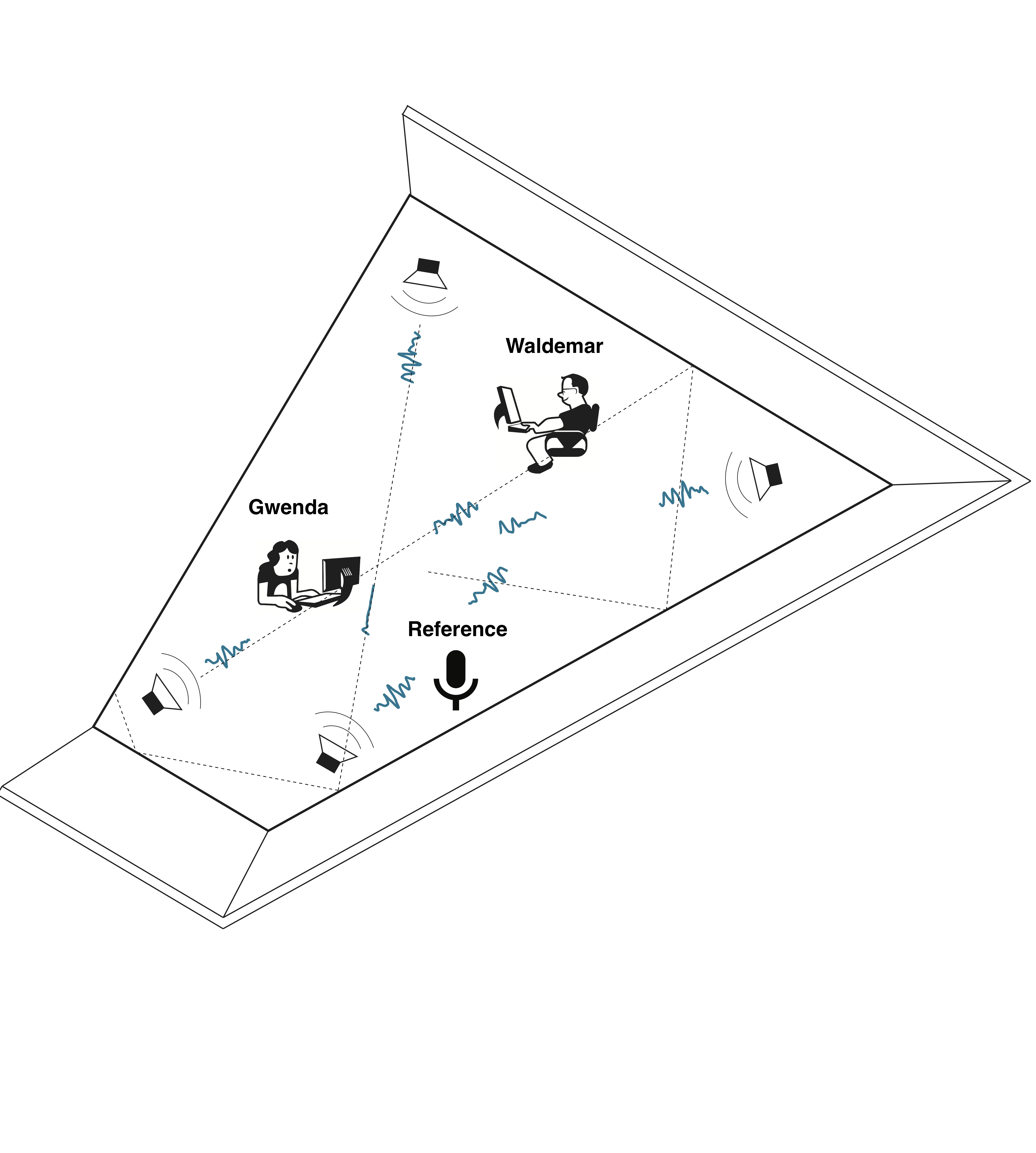COCKTAILS, BUT NO PARTY: MULTIPATH-ENABLED PRIVATE AUDIO
We describe a private audio messaging system that uses echoes to unscramble messages at a few predetermined locations in a room. The system works by splitting the audio into short chunks and emitting them from different loudspeakers. The chunks are carefully filtered so that as they echo around the room, they sum to noise everywhere except at a few chosen focusing spots where they exactly reproduce the intended messages. Unlike standard personal audio zones, the proposed method renders sound outside the focusing spots unintelligible. Unlike classical methods that are hobbled by reverberation, our method essentially depends on echoes: the room acts as a mixing system such that at given points we get the desired output. Finally, our method requires a modest number of loudspeakers and only a few impulse response measurements at points where the messages should be delivered. We demonstrate its effectiveness via objective quantitative metrics as well as informal listening experiments in a real room.
Work by Yu-Jeh Liu, Jonah Casebeer and Ivan Dokmanic.
Consider the following communication problem: using a set of loudspeakers in a room we want to transmit an audio message to Gwenda at point A and a different audio message to Waldemar at point B. Gwenda should not be able to understand Waldemar's message, nor should Waldemar understand Gwenda's. Crucially, no one else in the room should understand any of the messages.
This problem is related to personal audio zones and soundfield reproduction. However, standard techniques do not emphasize requirement that the message should only be intelligible by its target recipient. On the other hand, we do not require silence away from the focusing spots, only unintelligibility.
We now perform a thought experiment with reference to the below figure imagine that we divide the message waveform intended for Waldemar into short bursts of sound and emit different bursts from different loudspeakers. Can we somehow cleverly delay and filter those short bursts of sound so that at the intended listening point (in this case point A), with the help of echoes, the segments neatly align to form the desired message, while arriving in a disordered, haphazard manner away from A?

In this paper we show that such a feat is indeed possible. We show that the described thought experiment leads to a new method for private audio communication with potential to extend to other wave phenomena. Interestingly, performance can be improved if instead of emitting short segments of the intended message, we emit carefully filtered Gaussian noise bursts.
For demonstration purposes we now add a reference microphone which is placed randomly within the described setup. With it we seek to verify that eavesdroppers would not be able to understand the messages sent to Waldemar or Gwenda.
First, the results which we desire. The below table contains the desired audio for both Waldemar and Gwenda.
| Desired Audio | |
| Waldemar | |
| Gwenda | |
| Ref | N/A |
Now, the results from simulations and real world testing. The left table contains simulated results for Waldemar and Gwenda. The right table contains real world results.
|
|
We note that these sound mouch better than the below left table where no chopping is performed and the below right table where we don't use white noise as the input.
|
|